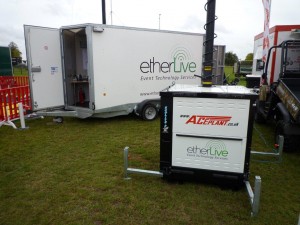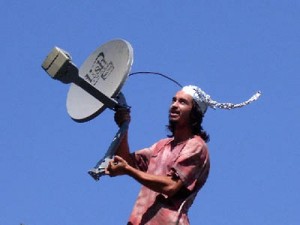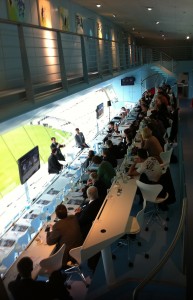This week sees our 4th consecutive year exhibiting at the Showman’s Show. The show, at Newbury Showground on Wednesday 19th and Thursday 20th October, in a way marks a transition from the 2011 outdoor event season to the start of the 2012 season, although these days we see a variety of outdoor events year-round.
2012 in the UK is of course a bit of a one off with the Olympics and Paralympics occurring right at the peak of the outdoor event season. We are providing a number of services for Olympic related activity, such as all the IT, communications and broadcast provision for the London Media Centre, but we have been very careful to ensure this has no impact on our existing customers and their events.
What is important though is booking and planning for 2012, especially in London and other locations that will see Olympic activity. Provision of connectivity such as fibre and broadband services will see longer lead times due to sheer demand (we are ordering many services already so that they are provisioned very early next year). Transportation is another area which is impacted with requirements on suppliers to submit transport plans for London well in advance of events if they occur during the broad Olympic period. These aspects and others are all good topics for discussion at Showman’s if you are planning an event in 2012.
This year we are on Stand 71 of the indoor hall where we will be demonstrating a new generation of mobile VoIP handsets – allowing the freedom of a mobile phone with the cost advantages of VoIP. These units also couple up with an alarm and monitoring system providing a new level of integrated service for event organisers.
We will also be launching our latest innovation; Event Band, a suite of tools using RFID technology facilitating payment systems, loyalty services, accreditation and crew management. This technology will sit alongside the latest generation wireless chip & pin PDQs providing reliable payment methods for bars, merchants, exhibitors and ticketing.
The latest networked noise monitoring support offered by Etherlive will be on display, along with a demonstration of next generation satellite broadband, offering internet anywhere from the new KA band with higher internet speeds.
Alongside all the new products we will also have our core network, communications and CCTV technologies on display, solutions that have been used time and time again across a wide range of events connecting thousands of users. Outside we will also have one of our communications tower lights offering CCTV, Wi-Fi and public address as well as an economical lighting system. This can be found on the Aceplant stand (169) at the end of Avenue G.
Recently we announced that Etherlive has joined ESSA (Event Supplier and Services Association), alongside ongoing membership of the AIF (Association of Independent Festivals) and the ASAO (Association of Show and Agricultural Organisations). As well as actively participating in these organisations we also offer special services to fellow members.
We will have plenty of staff on hand to discuss event requirements and provide cost effective solutions to a broad range of connectivity, communications and other event IT needs.










